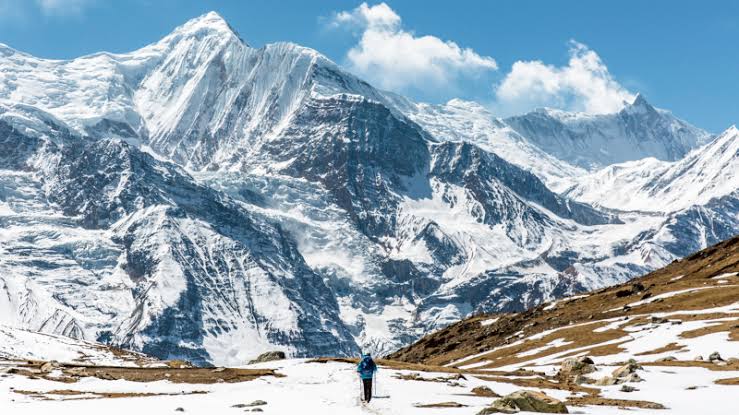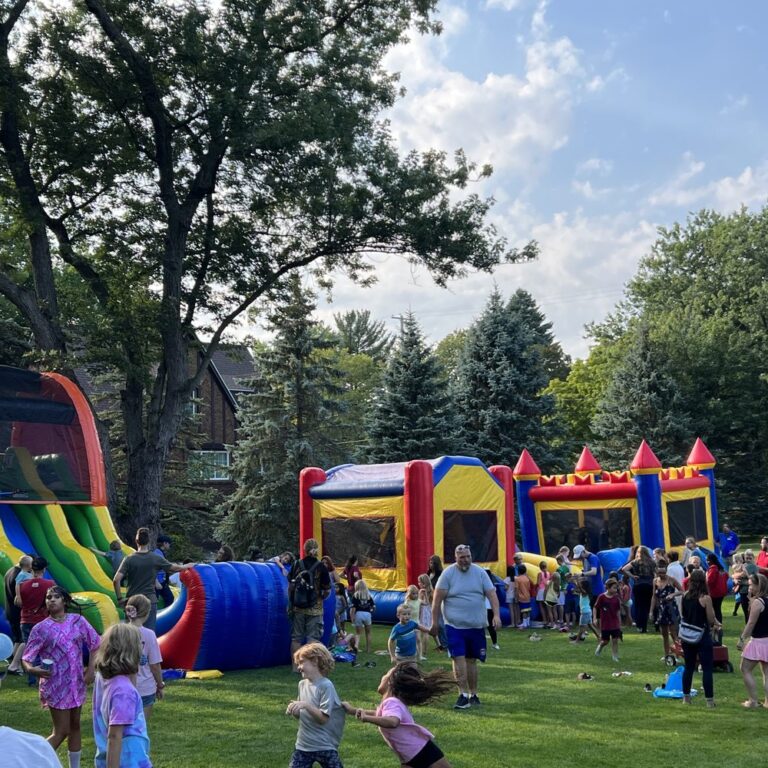The Annapurna Circuit is a photographer’s dream, with its breathtaking landscapes, vibrant cultural scenes, and diverse natural environments. Capturing the essence of this iconic trek requires more than just a camera; it involves understanding how to make the most of the stunning vistas and unique moments along the trail. Here’s how to ensure you capture the beauty of the Annapurna Circuit trek effectively.
Before setting out, ensure your camera gear is well-prepared and suited for the trek. A DSLR or mirrorless camera with a versatile lens (such as an 18-55mm zoom lens) is ideal, as it offers flexibility in various shooting conditions. A lightweight tripod is also recommended for stability during low-light conditions or for capturing long-exposure shots of the night sky.
Extra Batteries and Memory Cards: Given the trek’s remote locations, power sources are limited. Carry extra batteries and memory cards to ensure you don’t miss any photo opportunities. Cold weather can drain batteries quickly, so keep spares warm in an inner pocket.
Weather Protection: Protect your gear from dust, rain, and extreme temperatures with a weatherproof camera bag or rain cover. The Annapurna Circuit’s weather can be unpredictable, so it’s crucial to shield your equipment from the elements.
Golden Hours: The best light for photography is during the golden hours—shortly after sunrise and just before sunset. The soft, warm light enhances colors and textures, providing dramatic shadows and highlights that add depth to your photos.
Overcast Conditions: Don’t be discouraged by overcast skies. Cloud cover can diffuse light and reduce harsh shadows, creating even lighting that’s perfect for capturing details and colors in landscapes and portraits.
Rule of Thirds: Use the rule of thirds to create balanced and engaging compositions. Imagine your frame divided into a 3×3 grid, and position key elements along these lines or their intersections to draw viewers’ eyes into the scene.
Leading Lines: Incorporate natural leading lines, such as paths, rivers, or ridges, to guide the viewer’s eye through the photograph and add a sense of depth.
Local Culture: Take the opportunity to photograph the local people and their daily lives. Ask for permission before taking portraits, and try to capture authentic moments of interaction and traditional activities. This adds a cultural dimension to your photo collection.
Wildlife: The Annapurna Circuit trek difficulty is home to diverse wildlife. With patience and respect, you can capture images of animals such as the Himalayan tahr or various bird species. Use a telephoto lens to photograph wildlife from a distance, minimizing disturbance.
Sunrises and Sunsets: The panoramic views from high-altitude points, like Thorong La Pass, are spectacular at sunrise and sunset. Arrive early to set up and be ready for the changing light conditions. Capture the play of colors across the mountains and the shifting shadows.
Altitude Effects: At higher altitudes, the air is thinner, which can affect your camera’s performance and battery life. Be mindful of condensation when moving between different temperatures, and keep your gear in a sealed bag when transitioning from cold to warm environments.
Environmental Respect: Be aware of your surroundings and avoid disturbing nature. Stick to marked paths and respect wildlife and local customs. Always follow Leave No Trace principles to preserve the pristine beauty of the Annapurna region.
Adjustments and Settings: Use manual mode to control exposure settings and adapt to varying light conditions. Adjust your ISO, shutter speed, and aperture to match the lighting and your artistic vision. For high-contrast scenes, consider bracketing your exposures to capture details in both shadows and highlights.
Editing Software: Utilize photo editing software to enhance your images. Adjusting contrast, saturation, and sharpness can bring out the details and vibrancy of your photos. Be cautious not to over-edit; aim to maintain the natural beauty of the scene.
Organize and Backup: Regularly back up your photos to multiple storage devices, including cloud services. Organize your images by date and location to make it easier to sort and review your shots.
Photographing the Annapurna Circuit trek is an opportunity to capture not just the beauty of the landscapes but also the essence of the adventure. By preparing your gear, mastering lighting and composition, capturing unique moments, and respecting the environment, you can create a stunning visual record of your trek. Embrace the journey with your camera, and let the beauty of the Annapurna Circuit unfold through your lens.
Introduction to Trek Photography
Trek photography combines the thrill of exploration with the art of capturing breathtaking natural beauty. The Annapurna Circuit, with its diverse landscapes and vibrant cultural scenes, offers ample opportunities for stunning photographs. Whether you’re an experienced photographer or a hobbyist, trek photography allows you to document your adventure, preserve memories, and share the splendor of nature with others.
What to Expect: Trek photography involves capturing a range of subjects, from sweeping mountain vistas and serene lakes to intimate portraits of local people and wildlife. It requires both technical skills and a keen eye for composition. The changing light and varying weather conditions on the Annapurna Circuit present both challenges and opportunities, making it essential to be prepared for different scenarios.
Why It Matters: Good trek photography not only records the visual aspects of your journey but also conveys the emotions and experiences of the trek. Each photo can tell a story, from the challenges of high-altitude trekking to the beauty of the sunrise over the Himalayas. With thoughtful planning and practice, you can capture images that reflect the true essence of your adventure.
Getting Started: Begin by familiarizing yourself with your camera gear and understanding the basics of composition and lighting. Embrace the journey with a creative mindset, and use photography as a tool to enhance your trekking experience and create lasting memories.
Essential Photography Gear
For capturing the beauty of the Short Trek to Annapurna Circuit, having the right photography gear is crucial. Here’s a rundown of the essential equipment you’ll need:
Camera: A DSLR or mirrorless camera is ideal for trek photography due to its versatility and image quality. These cameras offer various settings and interchangeable lenses, allowing you to adapt to different shooting conditions. Compact cameras or high-end smartphones with good camera features can also work if you prefer a lighter load.
Lenses: A versatile zoom lens, such as an 18-55mm or 24-70mm, is great for capturing a wide range of scenes from landscapes to portraits. A wide-angle lens (e.g., 10-18mm) is useful for expansive mountain views, while a telephoto lens (e.g., 70-300mm) can help capture distant wildlife or details in the landscape.
Tripod: A lightweight, portable tripod is essential for stabilizing your camera, especially for low-light conditions, long exposures, or capturing steady shots in windy conditions. Ensure it’s sturdy yet compact enough for easy transport.
Extra Batteries and Memory Cards: Cold weather can drain camera batteries quickly, so carry extra batteries and keep them warm. Bring ample memory cards to store your photos, as you may not have access to backup options in remote areas.
Protective Gear: Use weatherproof bags or covers to protect your gear from dust, rain, and temperature fluctuations. Lens cleaning kits are also useful for keeping your equipment free from dust and smudges.
Understanding Lighting Conditions
Lighting is a crucial element in photography, influencing the mood, clarity, and impact of your images. On the Annapurna Circuit, varying lighting conditions can dramatically affect your shots:
Golden Hours: The best light for photography occurs during the golden hours—shortly after sunrise and just before sunset. During these times, the soft, warm light enhances colors and textures, creating more dynamic and visually appealing images.
Midday Light: The harsh midday sun can result in strong shadows and high contrast. While this can create dramatic effects, it can also make it challenging to capture details. Consider using a polarizing filter to reduce glare and enhance colors, or find shaded areas to shoot.
Overcast Conditions: Cloudy skies provide diffuse, even lighting, which is excellent for capturing rich colors and details without harsh shadows. Overcast conditions can also create a moody atmosphere in your photos, highlighting textures and patterns in the landscape.
High Altitude Lighting: At high altitudes, the sun’s rays are more intense due to thinner air. Be cautious of potential overexposure and consider adjusting your camera settings to handle the increased brightness. Using a lens hood can help reduce lens flare and improve contrast.
Best Times for Capturing Sunrises and Sunsets
Capturing sunrises and sunsets on the Annapurna Himalaya Trekking can yield some of the most stunning and memorable photographs. Here’s how to make the most of these magical moments:
Sunrise: The early morning light can create dramatic effects as the sun rises over the mountains. Plan to arrive at your chosen viewpoint well before sunrise to set up your gear and find the perfect composition. The pre-dawn light, known as the blue hour, can also provide beautiful, soft hues in the sky.
Sunset: Sunset offers warm, golden light that can bathe the landscape in a rich, golden glow. Similar to sunrise, get to your location early to capture the changing light and prepare for the optimal shot. The time just after sunset, known as the blue hour, provides a cool, calming light that contrasts beautifully with the remaining warmth of the sunset.
Planning: Research and plan your sunset and sunrise shoots based on the trek’s geography. Some viewpoints might be better for sunrise, while others are ideal for sunset. Consider factors such as the orientation of the landscape and potential obstructions in the horizon.
Weather and Timing: Check weather conditions before heading out, as clear skies are ideal for capturing the full spectrum of colors during these times. Be prepared for quick changes in weather and have your camera settings adjusted to handle varying light conditions.
Composition Techniques for Landscape Shots
Composition plays a critical role in creating compelling landscape photographs on the Annapurna Circuit. Here are some techniques to enhance your landscape shots:
Rule of Thirds: This fundamental composition technique involves dividing your frame into a 3×3 grid and positioning key elements along these lines or their intersections. This approach helps create balanced and visually engaging images.
Leading Lines: Use natural elements such as trails, rivers, or ridges to guide the viewer’s eye through the photograph. Leading lines create a sense of depth and can draw attention to the main subject.
Foreground Interest: Incorporate interesting elements in the foreground to add depth and context to your landscape shots. This could be rocks, plants, or other natural features that complement the background scenery.
Framing: Use natural elements like tree branches, rock formations, or arches to frame your subject. Framing can help focus attention on the main subject and add a sense of depth and dimension.
Perspective and Angles: Experiment with different perspectives and angles to capture unique views of the landscape. Climbing to higher vantage points or shooting from a low angle can offer fresh and dramatic perspectives.
By applying these composition techniques, you can create stunning landscape photographs that capture the beauty and grandeur of the Annapurna Circuit.
Capturing Local Culture and People
Photographing local culture and people along the Annapurna Circuit can enrich your trekking experience and provide a deeper connection to the region. Here are some tips for capturing the essence of local life respectfully and effectively:
Seek Permission: Always ask for permission before taking portraits of individuals. Many locals are happy to be photographed, especially if you show genuine interest and respect for their culture. A polite approach and a smile go a long way in building rapport.
Capture Authentic Moments: Aim to photograph candid moments that reflect daily life and traditions. This could include scenes such as people working in fields, participating in festivals, or engaging in traditional crafts. Avoid staging scenes; instead, try to capture spontaneous and natural interactions.
Respect Cultural Sensitivities: Be aware of cultural norms and sensitivities. In some communities, photography may be restricted or considered intrusive. Research local customs and show sensitivity to cultural practices. When in doubt, it’s better to ask and follow local guidance.
Composition and Lighting: Use natural light to enhance the authenticity of your portraits. Early morning or late afternoon light can provide a warm and flattering glow. Pay attention to your composition, using elements of the environment to frame your subjects and add context to the photographs.
Engage with Subjects: Take time to engage with the people you photograph. Learning a few local phrases or customs can help build trust and make your interactions more meaningful. Showing appreciation for their time and culture can lead to more authentic and respectful photographs.
Macro Photography in Nature
Macro photography on the Annapurna Circuit allows you to explore the intricate details of flora, fauna, and other small subjects. This type of photography can reveal the hidden beauty of nature that’s often overlooked. Here’s how to make the most of macro opportunities:
Equipment: A macro lens is essential for capturing fine details up close. If you don’t have a dedicated macro lens, consider using close-up filters or extension tubes to achieve similar results. A tripod can help stabilize your shots and prevent camera shake, especially in low light.
Focus and Depth of Field: Achieving sharp focus on small subjects is crucial in macro photography. Use a shallow depth of field to blur the background and highlight your subject, but ensure enough of the subject is in focus. Focus stacking, where multiple images are combined, can also help achieve greater depth of field.
Lighting: Natural light is often best for macro photography, as it provides a soft and diffuse illumination. Early morning light can be particularly advantageous, offering a gentle and flattering light for capturing details. If needed, use a reflector to bounce light onto your subject or a diffuser to soften harsh sunlight.
Composition: Pay attention to the composition of your macro shots. Use the principles of composition such as the rule of thirds or leading lines to create visually appealing images. Look for patterns, textures, and colors that make your subject stand out.
Patience and Observation: Macro photography requires patience and keen observation. Spend time studying your subject and experimenting with different angles and perspectives. Sometimes the smallest details can be the most captivating.
Using Filters for Enhanced Images
Filters can enhance your photographs by altering light, color, and contrast. On the Annapurna Circuit Trekking, using filters can help you achieve the best possible results in varying conditions. Here’s how to effectively use filters:
Polarizing Filter: A polarizing filter reduces reflections and glare, enhances color saturation, and improves contrast. It’s particularly useful for capturing clear skies, reducing reflections on water surfaces, and making colors pop. Rotate the filter to find the optimal effect and remember to adjust your exposure settings accordingly.
ND (Neutral Density) Filter: ND filters reduce the amount of light entering the lens, allowing you to use longer shutter speeds or wider apertures even in bright conditions. This is useful for creating motion blur in waterfalls or achieving a shallow depth of field in bright sunlight.
Graduated ND Filter: A graduated ND filter helps balance the exposure between the bright sky and the darker foreground. This filter has a gradient that transitions from dark to clear, allowing you to capture more balanced landscapes with enhanced detail in both the sky and land.
UV Filter: While modern digital sensors are less affected by UV light, a UV filter can still protect your lens from dust, scratches, and moisture. It’s a useful addition to your gear, especially in rugged trekking conditions.
Filter Effects: Experiment with different filters to achieve various effects. For instance, using a color filter can enhance specific hues in your images, while a soft-focus filter can add a dreamy quality to landscapes.
Photographing Wildlife Safely
Photographing wildlife on the Annapurna Circuit requires a balance of patience, respect, and safety. Here are some key tips for capturing wildlife without disturbing their natural behavior:
Respect Wildlife: Maintain a respectful distance from animals to avoid causing stress or disrupting their natural activities. Use a telephoto lens to capture images from a safe distance. Avoid approaching wildlife too closely or making sudden movements that could startle them.
Know the Species: Research the wildlife you might encounter to understand their behavior and habitats. Knowing when and where certain animals are active can increase your chances of capturing great shots while minimizing disruption.
Use Appropriate Gear: A telephoto lens is essential for wildlife photography, allowing you to capture detailed images without getting too close. A lens with a longer focal length (e.g., 300mm or more) will be beneficial. A tripod or monopod can help stabilize your shots, especially when using long lenses.
Be Patient: Wildlife photography often requires waiting for the right moment. Be prepared to spend time observing and waiting for the perfect shot. Patience and quiet observation are key to capturing natural and compelling wildlife images.
Follow Guidelines: Adhere to local guidelines and regulations regarding wildlife photography. Some areas may have specific rules to protect both the animals and their habitats. Always prioritize the well-being of wildlife and avoid any actions that could harm their environment or behavior.
Tips for Shooting in High Altitudes
Shooting at high altitudes, such as those found on the Annapurna Circuit, presents unique challenges due to reduced oxygen levels, increased UV radiation, and varying weather conditions. Here are some tips to ensure successful photography in high-altitude environments:
Adjust Camera Settings: High altitudes can affect your camera’s performance, so be prepared to adjust settings. The thinner atmosphere can cause more intense sunlight, so use lower ISO settings to avoid overexposure and adjust your aperture and shutter speed accordingly.
Manage Battery Life: Cold temperatures at high altitudes can drain camera batteries quickly. Carry spare batteries and keep them warm in your inner clothing. Consider using a battery warmer or heated pouches if needed.
Protect Your Gear: The harsh conditions at high altitudes can impact your camera equipment. Use weatherproof cases and lens covers to protect against dust, moisture, and extreme temperatures. Be cautious of condensation when moving between different temperature zones.
Stay Hydrated and Acclimated: High altitudes can affect your physical and cognitive abilities. Ensure you stay hydrated and acclimate properly to avoid altitude sickness, which can impact your ability to concentrate and operate your camera effectively.
Utilize UV Filters: The increased UV radiation at high altitudes can cause lens flare and haze in your images. Use a UV filter to protect your lens and improve image clarity.
Prepare for Variable Weather: High-altitude weather can change rapidly, so be prepared for varying conditions. Carry weather-resistant gear and be ready to adjust your shooting plans based on the weather. Use filters to manage contrast and exposure changes due to shifting light conditions.
By following these tips, you can capture stunning photographs while navigating the challenges of high-altitude environments, preserving the beauty of the Annapurna Circuit in your images.
Post-Processing Essentials
Post-processing is a vital step in photography that enhances and refines your images after they’ve been captured. For trekkers on the Annapurna Circuit, this can mean transforming raw snapshots into stunning visual memories. Here’s how to effectively use post-processing to polish your trek photos:
Software Choices: Popular photo editing software includes Adobe Lightroom and Photoshop, both of which offer robust tools for enhancing images. Lightroom is excellent for managing and making adjustments to multiple photos, while Photoshop provides advanced editing capabilities.
Basic Adjustments: Start with basic adjustments like exposure, contrast, and white balance. Correcting exposure and adjusting contrast can make your images more vibrant and dynamic. White balance adjustments help correct color casts, making your photos more true to life.
Cropping and Straightening: Cropping can improve composition by removing unwanted elements and focusing on the main subject. Straightening the horizon ensures your landscapes have a professional, polished look.
Color Correction and Saturation: Adjust color saturation to make colors pop without appearing unnatural. Be mindful of maintaining the true color palette of the scene, especially in landscapes where colors play a crucial role.
Sharpening and Noise Reduction: Apply sharpening to enhance details, but avoid over-sharpening, which can introduce artifacts. Use noise reduction tools to minimize graininess, especially in low-light or high ISO shots.
Creative Enhancements: Experiment with creative effects like vignettes, filters, and gradients to add a unique touch to your images. However, use these sparingly to maintain the natural beauty of your photos.
Backup and Archive: Save your edited images in high-resolution formats and back them up to multiple storage devices or cloud services. Proper archiving ensures your photos are preserved for future enjoyment and sharing.
Sharing Your Images Responsibly
Sharing your trek photos responsibly involves considering both the ethical implications and the impact of your images. Here’s how to ensure your sharing practices are thoughtful and respectful:
Respect Privacy: When sharing photos that include people, especially local communities, ensure you have their consent. Avoid sharing images of individuals in sensitive or vulnerable situations without permission.
Cultural Sensitivity: Be aware of the cultural context of your images. Some cultures may have restrictions or preferences regarding how their people or practices are depicted. Approach these subjects with respect and sensitivity.
Avoiding Stereotypes: Represent subjects authentically and avoid perpetuating stereotypes. Focus on capturing the true essence of the people, places, and cultures without sensationalizing or misrepresenting them.
Responsible Platforms: Choose platforms that respect user privacy and offer control over who can view and share your images. Be mindful of how your images are used and shared online, and consider adding watermarks if necessary to protect your work.
Engage Respectfully: When sharing images on social media or blogs, engage with your audience respectfully. Provide context and background to your images to foster understanding and appreciation for the places and people depicted.
Support Conservation: Use your platform to promote environmental and cultural conservation. Highlighting the importance of preserving the natural beauty and cultural heritage of the Annapurna region can encourage others to travel responsibly.
Ethical Photography Practices
Ethical photography practices are crucial for ensuring that your images are captured and shared with respect and integrity. Here’s how to approach photography ethically on the Annapurna Circuit:
Respect for Subjects: Always approach photography with respect for your subjects. Avoid intruding on private moments or disrupting daily life. Seek permission before photographing people, especially in culturally sensitive contexts.
Minimize Impact: Strive to minimize your environmental impact while photographing. Avoid disturbing wildlife, and stick to established trails to preserve natural habitats. Follow Leave No Trace principles to protect the landscapes you’re capturing.
Cultural Sensitivity: Be mindful of local customs and traditions. Understanding and respecting cultural practices ensures that your photography is not only respectful but also enriches your connection with the people and places you encounter.
Transparency: Be honest about the context of your photographs. Avoid misleading captions or manipulative editing that could distort the reality of the scene. Present your images in a way that accurately represents the subject matter.
Education and Advocacy: Use your photography to educate and advocate for causes that matter. Sharing information about conservation efforts or cultural preservation can enhance the impact of your images and contribute to positive change.
Accountability: Take responsibility for the images you capture and share. Be open to feedback and willing to address any concerns related to your photography. Strive to continually improve your ethical practices.
Storytelling Through Your Photos
Storytelling through photography is about capturing moments that convey a narrative or evoke emotions. On the Annapurna Circuit, this involves using your images to narrate the journey, experiences, and essence of the trek. Here’s how to effectively tell a story with your photos:
Find the Narrative: Identify the central theme or story of your trek. This could be the personal journey of overcoming challenges, the cultural experiences along the trail, or the stunning natural beauty of the landscape. Let this narrative guide your photographic approach.
Capture Key Moments: Focus on capturing key moments that contribute to the overall story. These might include significant landmarks, interactions with locals, or the daily routines of the trek. Each photo should add a piece to the narrative puzzle.
Use Sequences: Create a sequence of images to show progression or change. For example, you might photograph the journey from the base of a mountain to the summit, capturing the transformation of the landscape and the trekker’s experience along the way.
Emotional Connection: Aim to evoke emotions through your photos. Use composition, lighting, and subject matter to create images that resonate with viewers on an emotional level, whether it’s awe, tranquility, or the thrill of adventure.
Provide Context: Accompany your images with captions or narratives that provide context and background. Explain the significance of the scene, the people in the photos, or the experiences being depicted. This helps viewers connect more deeply with the story.
Create a Cohesive Collection: Edit and arrange your photos in a way that creates a cohesive story. Consider presenting them in a photo book, blog, or gallery format that flows logically and engages viewers from start to finish.
Conclusion: Preserving Memories from the Trek
Preserving memories from your Annapurna Circuit trek through photography involves both capturing and reflecting on your experiences. By documenting your journey with care, you create lasting memories that not only celebrate your adventure but also honor the beauty and culture of the region.
Reflect on Your Experience: Take time to review your photos and reflect on the journey they represent. Each image is a snapshot of your adventure, capturing not just the scenery but the emotions and experiences you encountered along the way.
Share and Educate: Use your photos to share your experiences with friends, family, and a wider audience. Highlight the importance of environmental and cultural preservation, and inspire others to travel responsibly.
Cherish Your Images: Create physical or digital albums to preserve your photos. Print your favorites, frame them, or compile them into a photo book. These tangible memories can serve as a lasting reminder of your trek.
Continued Exploration: Let your photographs inspire further exploration and appreciation of the natural world. Each image is a gateway to future adventures and deeper understanding of different cultures and landscapes.
Commit to Preservation: As you enjoy and share your images, commit to preserving the beauty and integrity of the places you’ve visited. Support conservation efforts and advocate for responsible travel practices, ensuring that future generations can also experience the wonders of the Annapurna Circuit.








